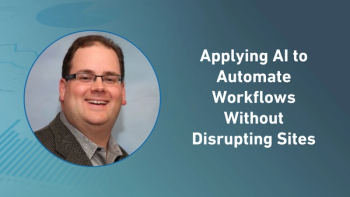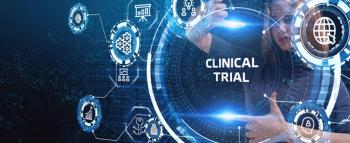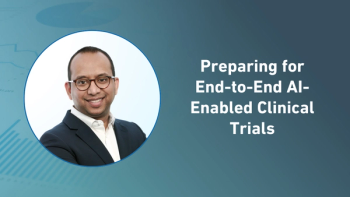Key Takeaways
- AI is Transforming Pharmacovigilance. Artificial intelligence is becoming essential in pharmacovigilance, streamlining workflows, accelerating data analysis, and shifting traditional roles, while requiring careful integration to maintain patient safety.
- Regulatory Collaboration is Key. Regulatory bodies such as the FDA are proactively supporting AI adoption through guidance and programs like the Emerging Drug Safety Technology Program, emphasizing transparency, oversight, and collaboration between stakeholders.
- Workforce and Strategy Must Evolve. Successful AI integration depends on upskilling PV professionals, aligning people and processes, identifying suitable use cases, and implementing strong governance frameworks to ensure responsible, effective use of AI.
The pharmacovigilance (PV) industry is entering a new era, shaped by exponential growth in data, rising case volumes, and increasingly sophisticated regulatory expectations. At the heart of this transformation is artificial intelligence (AI), with the potential to boost efficiency by redefining how PV teams operate and contribute to drug safety.
Across the product lifecycle, AI accelerates analysis and streamlines workflows, driving smarter decisions.
For PV leaders, these benefits come with new responsibilities, including fostering synergy between people and technology, guiding the responsible implementation of AI, and upholding the highest standards of patient safety.
As data volume and complexity increase, the future of PV depends on how well pharmaceutical organizations can scale AI-based solutions. AI is no longer experimental; it’s essential. However, its successful implementation demands collaboration at all levels, between regulators and sponsors, technologists and safety specialists, and automation and human judgment.
A regulatory shift with collaborative intent
As the use of AI within life sciences and PV has increased, so has the focus on it from regulatory agencies. In January 2025, the FDA released a draft guidance that aims to provide clarity on how AI can be applied across the drug lifecycle, including within PV.1
The guidance emphasizes a risk-based approach and outlines expectations for transparency, reproducibility, and model governance.
In this guidance, the FDA recognizes the role AI can play in PV case processing, safety signal detection, and regulatory reporting, provided organizations can demonstrate credible oversight and validation.
The FDA also launched the Emerging Drug Safety Technology Program (EDSTP).2 Launched in 2024 by the FDA’s Center for Drug Evaluation and Research, this voluntary program offers another forward-looking mechanism for dialogue. It allows sponsors to discuss their AI strategies with the FDA in a non-binding format. The program signals an openness to innovation while maintaining regulatory standards.
By fostering collaboration, it helps bridge the gap between cutting-edge technology and navigating ever-evolving compliance expectations.
Technology’s role in evolving today’s workforce
AI has evolved from a simple upgrade into a catalyst for workforce transformation and upskilling. Traditional PV operations have centered around manual and resource-heavy processes. By leveraging modern, technology-based approaches such as automation, PV professionals can be unshackled from traditional, repetitive, and resource-heavy tasks, allowing them to focus on more critical tasks and gain new skills in AI-based technologies.3
Twenty-first-century PV teams are increasingly composed of specialists with deep domain knowledge and technical fluency. These individuals interpret AI-generated outputs, guide decision-making, and ensure that safety conclusions are clinically sound and compliant with regulatory requirements.
This change calls for targeted workforce development. PV professionals must be trained not only in pharmacology but also in the ethical and operational implications of AI. They need to understand how to validate algorithms, interpret statistical outputs, and collaborate with data scientists and IT teams. As the level of casework continues to increase and automation assistance becomes commonplace, these high-value skills will be essential.
Practical considerations for making AI work for users
Effective AI integration is built on the alignment of people, process, and technology. Organizations must build robust frameworks to assess AI performance quantitatively and by quality, as well as its compliance adherence. This includes thorough documentation on model design, assumptions, version control, and outputs.
At the core of this accelerated technological boom is continuous human oversight and expertise, especially when it comes to signal evaluation and adverse event assessment.
Another factor in ensuring that AI is being used to its fullest potential is identifying the right use cases.
Not every PV activity is suitable for automation. Literature review, for instance, presents a strong use case, as AI can rapidly triage documents and extract relevant clinical content from unstructured data. Similarly, contact center calls and social media activity can be analyzed for potential adverse events using natural language processing and sentiment analysis.
A common theme in each use case is that implementation must be backed by a clear change management strategy. This includes preparing teams for updated or new workflows, communicating compliance requirements, and embedding checks and balances that prioritize patient safety above efficiency gains.
Preparing for what’s next
The FDA’s draft guidance and EDSTP indicate an important inflection point, not to be seen as speed bumps to slow progress but as invitations to engage in thoughtful innovation. Sponsors who take advantage of these programs can better anticipate regulatory expectations and gain confidence in their AI systems.
Ultimately, the future of PV will not be defined by the technology-driven tools but by the users and strategies behind them. AI can help PV teams push the boundaries of what is possible, but only if it is applied with clarity, integrity, and a sustained focus on patient outcomes.
Archana Hegde is Senior Director, PV Systems and Innovations, at IQVIA
References
1. FDA, Considerations for the Use of Artificial Intelligence to Support Regulatory Decision-Making for Drug and Biological Products (January 2025). https://www.fda.gov/regulatory-information/search-fda-guidance-documents/considerations-use-artificial-intelligence-support-regulatory-decision-making-drug-and-biological
2. CDER Emerging Drug Safety Technology Program (EDSTP). FDA. May 7, 2025. https://www.fda.gov/drugs/science-and-research-drugs/cder-emerging-drug-safety-technology-program-edstp
3. Kell, J. How Pharmaceutical Companies Are Training Their Workers on AI. Business Insider. March 10, 2025. https://www.businessinsider.com/pharmaceutical-companies-embrace-ai-in-drug-discovery-efforts-2025-3?utm_source=chatgpt.com





